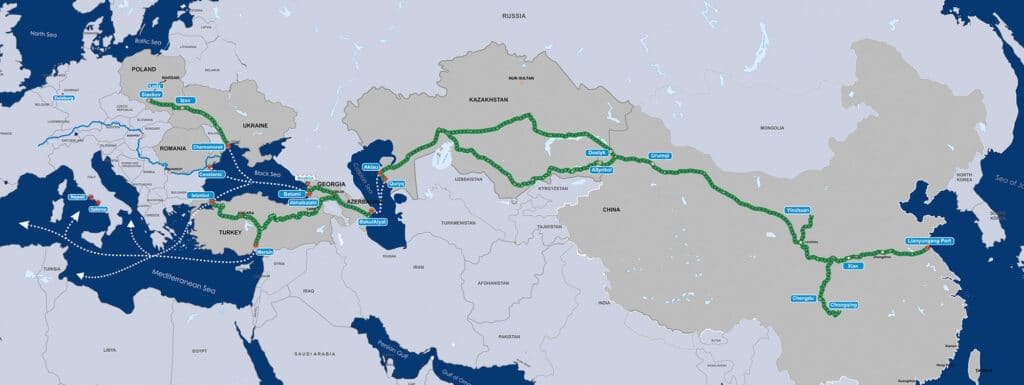Ankara, Turkey (PortSEurope) February 27, 2023 – Geopolitical conditions suggest strongly that the Middle Corridor will see more use than the Northern Corridor (via Russia), despite being a less efficient and more costly alternative. It is now the preferred route, according to an analysis by Selçuk Çolakoğlu, Founding Director of the Turkish Center for Asia Pacific Studies, published in Central Asia-Caucasus Analyst (full text).
While the Middle Corridor is one of six official corridors of the Belt and Road Initiative (BRI – new Silk Road), neither Chinese finance nor Chinese companies have, so far, been excessively involved. Beijing has also been largely absent from port developments around the Caspian Sea and the Black Sea.
Nevertheless, the Russia-Ukraine war and the West‑led sanctions regime against Russia have changed this picture dramatically. If the sanctions remain in place, the Northern Corridor will not be utilised regardless of its economic advantages. The Middle Corridor is currently facing its best opportunity ever to secure a dominant position in connecting Europe and Asia, according to Colakoglu.
The war dramatically changed Moscow’s perspective regarding the Middle Corridor. Infrastructure development along the Middle Corridor provides new logistic opportunities for Russia while the Northern Corridor has been blocked by Western countries through sanctions.
Western countries have realized that Moscow can weaponize its geopolitical position and logistic networks. This is undermining the Northern (Russian) Corridor’s position as the main overland East-West corridor, Colakoglu claims.
A North-South logistic opportunity
As Turkey, Georgia, Azerbaijan, and Kazakhstan have become critical corridors for Russia to reach international markets, the Middle Corridor has turned into a North-South logistic opportunity rather than a direct challenge to the Northern Corridor.
The Middle Corridor’s bottleneck is the lack of an entire transport‑oriented business ecosystem in the Caspian and Black Sea countries. It so far remains a firmly regional initiative. Its freight lacks transparency, especially regarding the cost of its extended section in Europe, which requires negotiation with various parties.
The Middle Corridor (Trans-Caspian International Transport Route – TITR) crosses five borders and transits one or two seas, depending on where the cargo is heading.
The EU has already made a commitment to increase eastward logistic integration, albeit for perhaps different reasons. The EU plans to invest as much as €2 billion as part of its plan to further extend its Trans‑European Transport Network (TEN‑T) to the Eastern Partnership countries, which include Azerbaijan and Georgia.
More PortSEurope news about the Middle Corridor
Copyright (C) PortSEurope. All Rights Reserved. 2023.

